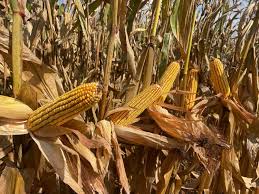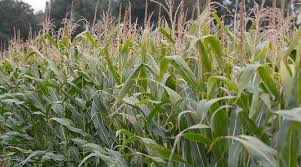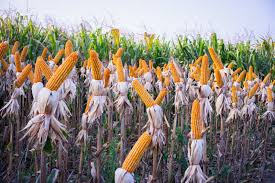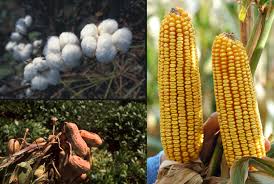The life cycle duration of all crops plays a crucial role in their management for maximum economic yield. For most agronomic crops, maturity ratings refer to the time from germination until physiological maturity.
Phytohormones significantly influence plant maturation, starting from germination and, in some cases, continuing until product consumption. Maturation is often linked with senescence.
Vegetables are harvested at various stages of maturity depending on the part of the plant being consumed. Harvesting too early may result in a lack of flavor and improper ripening, while harvesting too late may lead to fibrous or overripe produce.
Read Also: Are Honey Bees Aggressive?
Maturity at Harvest

Maturity at harvest is the most important factor determining the storage life and final quality of fruit. Immature fruits are highly susceptible to shriveling, mechanical damage, and inferior flavor quality when ripe.
Overripe fruits become soft, mealy, and have an insipid flavor soon after harvest. Fruits picked too early or too late are more prone to postharvest physiological disorders than those harvested at the optimal maturity stage.
Crops are typically harvested when they are considered “mature.” The best time for harvesting depends on various factors, including the economic part of the plant, intended use of the product, and postharvest storage conditions.
1. The Economic Part: The economic part or product of the crop can include the root, leaf, stem, grain, or other parts. These plant parts have different harvesting times, and crops should be harvested when the desired product reaches peak quality and quantity.
2. Utilization: The economic product may come from the same plant part, but depending on its intended use, it may be harvested fresh or dry. For example, corn may be harvested fresh or dry based on the desired outcome.
3. Storage Method: Once harvested, products often require storage before transportation to the market. Improper moisture content at harvest can lead to deterioration during storage. Grains with high moisture content require cold storage, and many grain producers use drying facilities to reach a safe moisture level for storage.
Timeliness is key when harvesting seeds. Harvesting too early results in high moisture content, making dry storage impossible. Harvesting too late leads to losses from disease, insect infestation, birds, and spoilage. Delayed harvesting also increases seed brittleness, making them more prone to damage during handling.
For seed crops, it may be worth harvesting slightly early and artificially drying the seeds to mitigate these risks. Proper drying methods should be employed, as excessive heat can destroy the seeds.
A well-ventilated, shaded area is ideal, and the seeds should be regularly turned. For field drying, harvesting must be timed so that it coincides with the dry season.
Categories of Crop Maturity

There are several operational and technical categories of crop maturity, including physiological maturity, harvest maturity, storage maturity, and commercial or horticultural maturity.
1. Physiological Maturity
Physiological maturity occurs when the seed reaches full development, but before normal harvesting time. At this point, the grain has been filled, and the embryo is complete. From then on, only water loss occurs.
Physiological maturity is defined as the stage when dry matter accumulation in the kernels or seeds stops, and the grain no longer “fills.” This is the period when sexually induced reproductive growth ceases. After this stage, crops can be harvested, provided there is equipment to manage the high moisture content.
In pulses, physiological maturity is marked by color changes in the pods. Plants can then be pulled up and placed in windrows or on racks for drying to ensure all pods are ready for threshing at the same time.
For cultivars with long flowering periods and pods of different ages, a balance must be struck between losing seeds from the oldest pods due to shattering and harvesting the youngest pods too early.
For groundnuts, there is no simple method to inspect pods. Therefore, a few plants should be dug up to check if the seeds are free in the pod and if the seed skin has changed color.
Examples:
i. Black layer formation at the tip of the kernel signals physiological maturity in corn and grain sorghum.
ii. In maize, the black layer can be seen by breaking off a seed from the cob, removing the fibrous tissue at the top, and inspecting the seed’s attachment point.
iii. French bean pods and okra are at physiological maturity when seeds are fully developed, and the pod will dehisce with little pressure.
iv. In rice and wheat, the golden yellow color of the grain and the senescence of lower leaves indicate physiological maturity.
v. In groundnuts, the development of black color in the inner shell of the pod signals physiological maturity.
At physiological maturity, increasing production inputs no longer contribute to yield gain. In grain crops, growth and grain filling cease at this stage.
Grains have approximately 40% moisture content and a hard dough consistency. Harvesting before physiological maturity results in low dry matter, poor quality, and shriveling during drying.
2. Harvest Maturity
Harvest maturity is the stage when the product is at its peak quality and quantity. Farmers generally determine the best time to harvest based on experience and various indicators. For most grain crops, harvest occurs when moisture content is between 15-18%.
However, even when harvested at higher moisture levels, the grain should be dried to 13-14% moisture content for safe storage.
For forage crops, harvest timing is optimal when the crop has reached maximum vegetative yield and high quality. Cereal crops should be cut for storage when the heads are emerging.
The harvest maturity of fruits and vegetables depends on their intended use. For local markets and processing, fully colored tomato fruits are harvested.
For distant markets, fruit should be harvested when it has started to develop color. Properly timed harvest ensures excellent post-harvest quality and extended storage life.
Poor quality and uneven ripening result from early or late harvesting. Fruits must be harvested at the correct stage of maturity with no physical damage.
Various maturity indices such as fruit set damage, visual indicators, size, shape, color, texture, lenticel number, specific gravity, starch content, soluble solids, sugar-acid ratio, and oil content—help determine fruit maturity.
Read Also: Honey Bees in Winter
3. Methods to Hastening Crop Harvesting

In some cases, it may be necessary to hasten crop harvesting. Once a grain crop reaches physiological maturity, any delay in harvesting may cause deterioration in both quality and quantity. Various methods can be used to speed up harvesting:
i. Direct Methods: These include defoliation and desiccation, which speed up crop maturity. Applying a defoliant causes leaf drop, while a desiccant dries the plant out in the field, inducing early maturity. For example, in cotton production, defoliation helps reduce undesirable plant debris and the chance of staining the fiber.
ii. Topping: Topping involves reducing vegetative material (mainly leaves), slowing photosynthesis and accelerating the drying of the economic part of the plant (e.g., pods).
iii. Indirect Methods: Crops can be harvested earlier than usual and dried to storable moisture content in drying facilities, reducing the need for waiting until normal harvest maturity.
4. Commercial or Horticultural Maturity
This stage refers to when the plant or plant part is ready for consumer use for a specific purpose. The horticultural maturity of fruits and vegetables depends on the intended use. For instance, a French bean pod is mature when it is tender and at its maximum size for horticultural purposes.
5. Storage Maturity
When postharvest drying is not an option, crops are harvested at a stage suitable for direct storage. For grains, this usually means allowing the ripening process to bring moisture content below 14%.
Sometimes, delays in harvesting—due to inclement weather, equipment failure, or other factors—can lead to premature or over-mature harvests, each with negative consequences. These may include:
i. Crop Yield Reduction: Early harvesting limits crop development and filling, resulting in lower yield. Delayed harvesting can lead to lodging, crinkling of the stem, and seed/grain shattering, causing increased harvest losses.
ii. Grain Quality Reduction: Prematurely harvested grains are shriveled with low starch content, while delayed harvesting causes weathering in the field, reducing germination and storability.
iii. Loss of Value: Weathered grain fetches lower prices and is rated poorly on the quality grading scale.
Understanding crop maturity stages is essential for optimizing harvest times and ensuring high-quality yields with minimal postharvest losses.
Do you have any questions, suggestions, or contributions? If so, please feel free to use the comment box below to share your thoughts. We also encourage you to kindly share this information with others who might benefit from it. Since we can’t reach everyone at once, we truly appreciate your help in spreading the word. Thank you so much for your support and for sharing!

